Forefoot Surgery Cartersville GA
When is Foot Surgery Necessary?
It might be difficult to know when forefoot surgery is necessary. Many foot problems do not respond to “conservative” management.
Your podiatric physician can determine when surgical intervention may be helpful. Often when pain or deformity persists, surgery may be appropriate to alleviate discomfort or to restore the function of your foot.
Bunionette (Tailor’s Bunion)
A protuberance of bone at the outside of the foot behind the fifth (small) toe, the bunionette or “small bunion” is caused by a variety of conditions including heredity, faulty biomechanics (the way one walks) or trauma, to name a few. Pain is often associated with this deformity, making shoes very uncomfortable and at times even walking becomes difficult.
If severe and conservative treatments fail to improve the symptoms of this condition, forefoot surgical repair may be suggested. Your podiatric physician will develop a surgical plan specific to the condition present.
Bone spurs
A bone spur is an overgrowth of bone as a result of pressure, trauma, or reactive stress of a ligament or tendon.
This growth can cause pain and even restrict motion of a joint, depending on its location and size.
Spurs may also be located under the toenail plate, causing nail deformity and pain. Surgical treatment and procedure is based on the size, location, and symptoms of the bone spur.
Your podiatric physician will determine the surgical method best suited for your condition.
Preoperative Testing and Care
As with anyone facing any surgical procedure, those undergoing forefoot and ankle surgery require specific tests or examinations before surgery to improve a successful surgical outcome.
Prior to surgery, the podiatric physician will review your medical history and medical conditions. Specific diseases, illnesses, allergies, and current medications need to be evaluated.
Other tests that help evaluate your health status may be ordered by the podiatric physician, such as blood studies, urinalysis, EKG, X-rays, a blood flow study (to better evaluate the circulatory status of the foot/legs), and a biomechanical examination.
A consultation with another medical specialist may be advised by a podiatric physician, depending on your test results or a specific medical condition.
Postoperative Care
The type of foot surgery performed determines the length and kind of aftercare required to assure that your recovery from surgery is rapid and uneventful.
The basics of all postoperative care involve to some degree each of the following: rest, ice, compression, and elevation.
Bandages, splints, surgical shoes, casts, crutches, or canes may be necessary to improve and ensure a safe recovery after foot surgery.
A satisfactory recovery can be hastened by carefully following instructions from your podiatric physician.
Your Feet Aren’t Supposed to Hurt
Remember that foot pain is not normal. Healthy, pain-free feet are a key to your independence.
At the first sign of pain, or any noticeable changes in your feet, seek professional podiatric medical care.
Your feet must last a lifetime, and most Americans log an amazing 75,000 miles on their feet by the time they reach age 50.
Regular foot care can make sure your feet are up to the task. With proper detection, intervention, and care, most foot and ankle problems can be lessened or prevented.
Remember that the advice provided in this pamphlet should not be used as a substitute for a consultation or evaluation by a podiatric physician.
